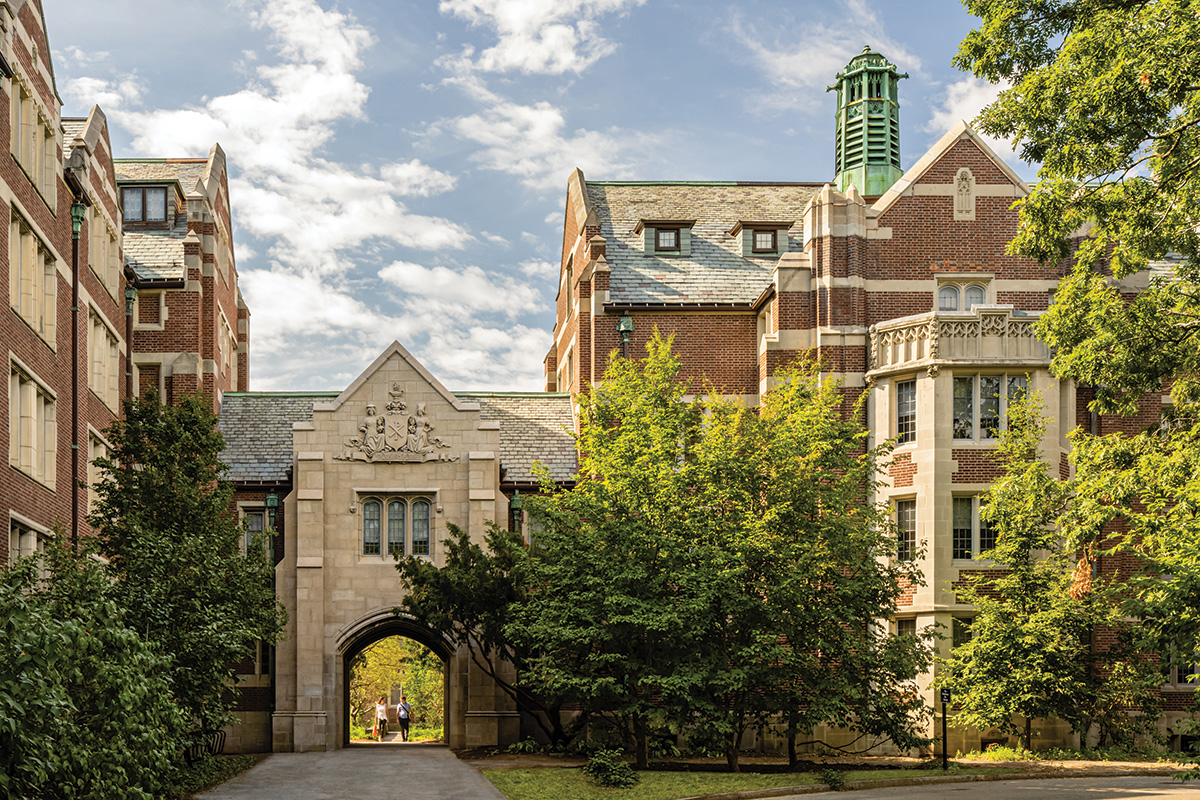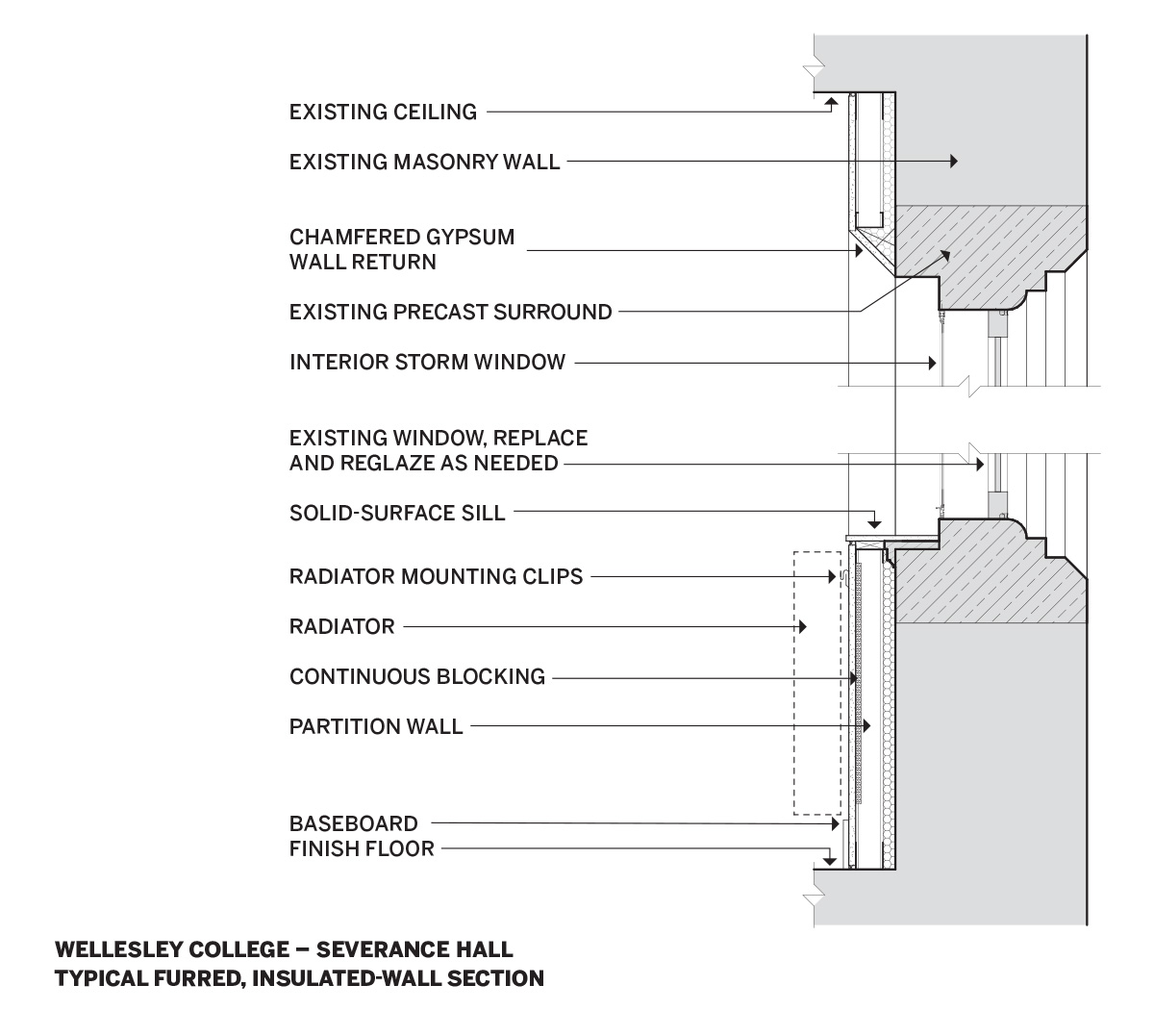Carbon-Neutral Campuses
As a new university, UC Merced has the unique advantage of having been designed for energy efficiency from the get-go, but for existing institutions of higher learning, inefficient legacy infrastructure presents a major challenge to achieving carbon neutrality. At Colgate University, a 3,000-student campus founded in 1819, most of the hundred or so buildings making up the school’s 2.4 million square feet are decades, if not centuries, old.
Colgate is one of the fewer than a dozen schools that have achieved carbon neutrality under the Presidents’ Climate Leadership Commitments (PCLC), launched in 2006 as the American College and University Presidents’ Climate Commitment. Signatories to the commitment pledge their institutions to achieve carbon neutrality “as soon as possible” through individually defined combinations of decarbonization and offsets. Administered by the nonprofit Second Nature, the PCLC encompasses Scope 1 and 2 emissions as well as Scope 3 emissions related to university-sponsored travel and employee commuting.
When Colgate made its carbon-neutrality commitment in 2009, the campus was generating baseline emissions of 17,000 metric tons of CO2 equivalents per year, including 8,385 metric tons in Scope 1. Since then, the university has reduced its overall emissions by about 50 percent, offsetting the remainder with third-party-verified credits to become carbon neutral in 2019. “We gave ourselves a 10-year grace period to reduce campus carbon emissions as much as possible before we took financial accountability for our remaining emissions,” says John Pumilio, Colgate’s director of sustainability. “The journey continues.”
To continue reducing building-related emissions, Colgate takes advantage of renovations and maintenance cycles to upgrade building envelope and HVAC systems bit by bit, setting targets for energy-use intensity, or EUI (energy use expressed as a function of a building’s size), commissioning, and monitoring. And it requires new construction to meet more stringent standards.
Colgate’s Benton Center for Creativity and Innovation—the anchor building of a 36,800-square-foot arts complex designed by New York–based Robert A.M. Stern Architects (RAMSA) and now starting construction—will use a ground-source heat pump system to help the campus move away from fossil fuels. (Currently, a natural gas boiler supplements a biomass system, which uses byproducts from local, FSC-certified forests.) An earlier RAMSA project on campus, Benton Hall (2018), an 18,500-square-foot LEED Platinum–certified career-services building, uses 17 percent of the electricity and 41 percent of the total energy of a benchmark building.
To harmonize with the historic campus, both projects are designed using period forms and proportions, roofed with slate, and clad with limestone-trimmed locally quarried bluestone. To achieve contemporary performance standards and a minimum 100-year life cycle from these timeless materials, the enclosures were designed in collaboration with a building-envelope consultant right from the schematic phase, with particular attention paid to minimizing thermal bridging where masonry supports tie through the exterior insulation to the steel structure. The additional depth of the highly insulated (R-40) wall facilitated the traditional detailing of the facades, says RAMSA partner Preston Gumberich, with deep setbacks for the triple-glazed windows’ creating shadow lines like those of the building’s load-bearing masonry neighbors. “There’s a misconception that sustainability is a style,” says Gumberich, “but traditionalist and contextual design is not mutually exclusive with sustainable principles and practices.”
Two new Colgate residences, also by RAMSA, include building-system monitors at main entrances, so that students can see their energy usage in real time and understand their impact on the environment in which they live. A competition has sprung up between the two residences to see which hall can achieve the greatest efficiency over time. “Especially with new buildings and universities, it’s really important that this be educational for the students,” says Gumberich. “It’s a huge opportunity, and we’ve taken advantage of that to the best of our ability.”
Since embarking on its carbon-neutral challenge 13 years ago, Colgate’s annual Scope 1 emissions have ranged between a low of 5,910 metric tons (a 30 percent decrease) and a high of 10,760 metric tons (a 22 percent increase). Emission reductions vary with such factors as the weather (cold years versus warmer years), fuel supply, heating-plant maintenance and renovations, and operational changes such as increased air exchanges during the Covid pandemic. New-building construction and student enrollment have also played a role. Since its 2009 baseline, the university has constructed over 300,000 square feet in five new buildings, and has added about 200 students and more than 110 faculty and staff. “While we’ve seen ups and downs over the years, Colgate has reduced its gross Scope 1 emissions per square foot and per student,” says Pumilio. Even after achieving carbon neutrality, the effort to cut remaining emissions—and the need to offset them—goes on: “Carbon neutrality was never an end goal, and I don’t think it should be,” he says. “But it’s a major milestone.”
In addition to the handful of colleges and universities that have achieved carbon neutrality, there are many more still working toward it. From Finegold Alexander’s work supporting institutional clients through its new FA Energy division, decarbonization entails working in close partnership with a project’s mechanical engineer, and with the architect or the engineer taking the lead, says Berry.

Photo and image below courtesy of FINEGOLD ALEXANDER & © RAJ DAS
AT WELLESLEY COLLEGE, Finegold Alexander’s upgrades to the envelope of a 1927 building will allow it to depend on a less carbon-intensive heating system.

Wellesley College - Severance Hall typical furred, insulated-wall section.
At Wellesley College, for instance, Finegold Alexander has designed envelope upgrades that are now under way at Severance Hall, a 56,000-square-foot student residence built in 1927. A combination of insulated interior partitions is being constructed against the previously uninsulated load-bearing masonry walls, together with interior storm windows for the original steel windows. The upgrade will make it possible to replace the building’s high-temperature steam-heating system with a low-temperature water loop, significantly improving occupant comfort and contributing to Wellesley’s goal of carbon neutrality by 2040.
As at Wellesley, transitioning from high-temperature fossil-fuel systems is a central challenge for all campuses that have committed to decarbonizing (except for the urban, grid-connected ones that don’t operate their own energy systems). But, says Transsolar’s Olsen, it’s a technical problem that’s not the most important thing for architects. What is important for architects to know, he says, is that, as campuses increasingly roll out requirements for all buildings to meet EUIs compatible with low-temperature heating systems, architects face a design choice. Solutions such as increased insulation, better windows, dedicated outdoor air supply, hydronics, and a few other basics will achieve those targets. “But do they necessarily impact design with a capital D? No,” he says. “Should they? Yes.” Whether it’s expressive, climate-responsive structures at UC Merced or durable, traditionalist buildings at Colgate, with their energy use on display, architecture has the opportunity to showcase campuses’ carbon-neutral ambitions, and, in so doing, influence occupants’ behavior and awareness. Architecture has the power to turn a technical challenge into a cultural change. “Do you see many schools emphasizing that as part of their plan?” says Olsen. “No.” And that, as much as energy performance itself, is something architects can help accomplish.
Supplemental Materials:
Alexander R. Barron, Maya Domeschek, Lucy E. Metz, Laura C. Draucker, Aaron L. Strong. “Carbon neutrality should not be the end goal: Lessons for institutional climate action from U.S. higher education.” One Earth, Volume 4, Issue 9, September 2021, pages 1248-1258.
Katharine Logan, is an award-winning writer on design, sustainability, and well-being in the built environment. Her work has appeared in Architectural Record (where she is a contributing editor), Landscape Architecture Magazine, BuildingGreen Report, USGBC+, and Planning, among others. She holds a graduate professional degree in architecture.



